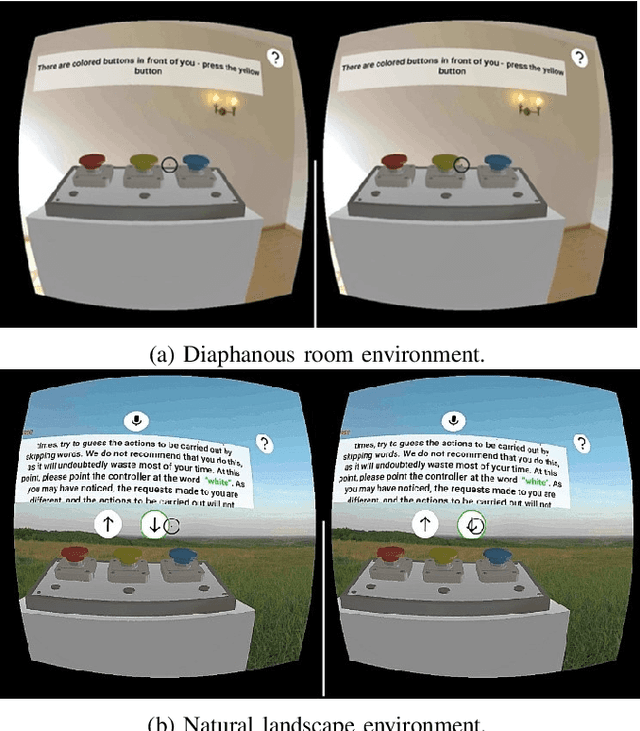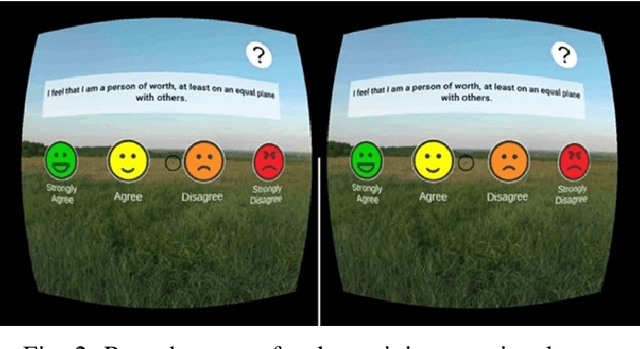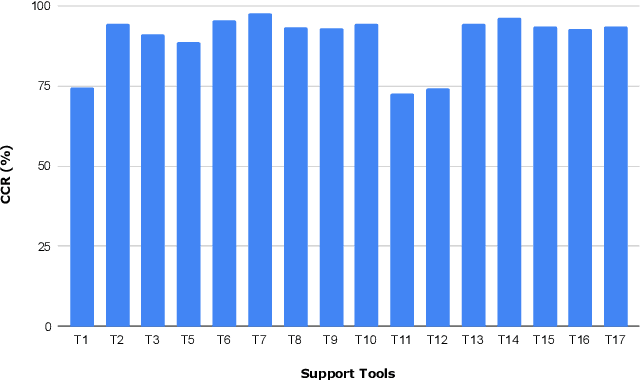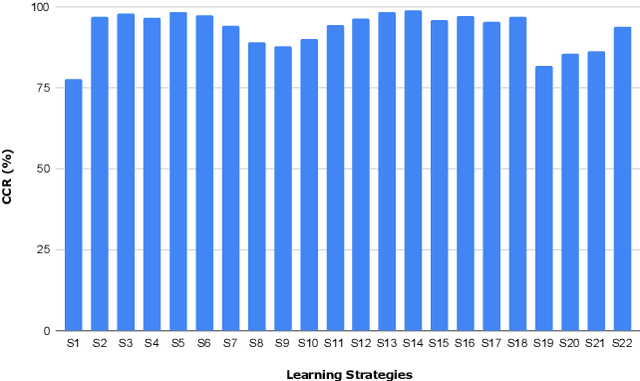José M. Alcalde-Llergo
A VR Serious Game to Increase Empathy towards Students with Phonological Dyslexia
Jan 15, 2024Abstract:Dyslexia is a neurodevelopmental disorder that is estimated to affect about 5-10% of the population. In particular, phonological dyslexia causes problems in connecting the sounds of words with their written forms. This results in difficulties such as slow reading speed, inaccurate reading, and difficulty decoding unfamiliar words. Moreover, dyslexia can also be a challenging and frustrating experience for students as they may feel misunderstood or stigmatized by their peers or educators. For these reasons, the use of compensatory tools and strategies is of crucial importance for dyslexic students to have the same opportunities as non-dyslexic ones. However, generally, people underestimate the problem and are not aware of the importance of support methodologies. In the light of this, the main purpose of this paper is to propose a virtual reality (VR) serious game through which teachers, students and, in general, non-dyslexic people could understand which are some of the issues of student with dyslexia and the fundamental utility of offering support to them. In the game, players must create a potion by following a recipe written in an alphabet that is specifically designed to replicate the reading difficulties experienced by individuals with dyslexia. The task must be solved first without any help and then by receiving supporting tools and strategies with the idea that the player can put himself in the place of the dyslexic person and understand the real need for support methodologies.
* 5 pages, 5 figures, MetroXRAINE 2023
Analysing the Needs of Homeless People Using Feature Selection and Mining Association Rules
Jan 15, 2024Abstract:Homelessness is a social and health problem with great repercussions in Europe. Many non-governmental organisations help homeless people by collecting and analysing large amounts of information about them. However, these tasks are not always easy to perform, and hinder other of the organisations duties. The SINTECH project was created to tackle this issue proposing two different tools: a mobile application to quickly and easily collect data; and a software based on artificial intelligence which obtains interesting information from the collected data. The first one has been distributed to some Spanish organisations which are using it to conduct surveys of homeless people. The second tool implements different feature selection and association rules mining methods. These artificial intelligence techniques have allowed us to identify the most relevant features and some interesting association rules from previously collected homeless data.
* 6 pages, 4 figures, 4 tables, MetroXRAINE 2022
Determining the Difficulties of Students With Dyslexia via Virtual Reality and Artificial Intelligence: An Exploratory Analysis
Jan 15, 2024



Abstract:Learning disorders are neurological conditions that affect the brain's ability to interconnect communication areas. Dyslexic students experience problems with reading, memorizing, and exposing concepts; however the magnitude of these can be mitigated through both therapies and the creation of compensatory mechanisms. Several efforts have been made to mitigate these issues, leading to the creation of digital resources for students with specific learning disorders attending primary and secondary education levels. Conversely, a standard approach is still missed in higher education. The VRAIlexia project has been created to tackle this issue by proposing two different tools: a mobile application integrating virtual reality (VR) to collect data quickly and easily, and an artificial intelligencebased software (AI) to analyze the collected data for customizing the supporting methodology for each student. The first one has been created and is being distributed among dyslexic students in Higher Education Institutions, for the conduction of specific psychological and psychometric tests. The second tool applies specific artificial intelligence algorithms to the data gathered via the application and other surveys. These AI techniques have allowed us to identify the most relevant difficulties faced by the students' cohort. Our different models have obtained around 90\% mean accuracy for predicting the support tools and learning strategies.
* 7 pages, 5 figures, 3 tables, MetroXRAINE 2022 Conference, VRAILEXIA european project
Jewelry Recognition via Encoder-Decoder Models
Jan 15, 2024Abstract:Jewelry recognition is a complex task due to the different styles and designs of accessories. Precise descriptions of the various accessories is something that today can only be achieved by experts in the field of jewelry. In this work, we propose an approach for jewelry recognition using computer vision techniques and image captioning, trying to simulate this expert human behavior of analyzing accessories. The proposed methodology consist on using different image captioning models to detect the jewels from an image and generate a natural language description of the accessory. Then, this description is also utilized to classify the accessories at different levels of detail. The generated caption includes details such as the type of jewel, color, material, and design. To demonstrate the effectiveness of the proposed method in accurately recognizing different types of jewels, a dataset consisting of images of accessories belonging to jewelry stores in C\'ordoba (Spain) has been created. After testing the different image captioning architectures designed, the final model achieves a captioning accuracy of 95\%. The proposed methodology has the potential to be used in various applications such as jewelry e-commerce, inventory management or automatic jewels recognition to analyze people's tastes and social status.
* 6 pages, 5 figures, MetroXRAINE 2023 Conference
 Add to Chrome
Add to Chrome Add to Firefox
Add to Firefox Add to Edge
Add to Edge